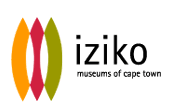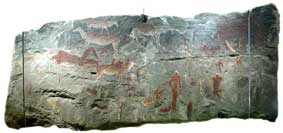!ke e: /xarra //ke
and the

Initiative of Hout Bay |
 |
By Prof. Henry (Jatti) Bredekamp
December 2007
South Africa of the 21st century is a nation in the making, after an era of almost four centuries of colonialism and apartheid. The new nation is, since 1994, engaged in a discourse about re-imagining its non-racial and ethnic identities within the context of a unitary state in post-colonial Africa and a globalizing world.
It is also within this context that the Hout Bay based Sentinel Experience initiative is conceptualizing the establishment of a Khoi-San Heritage Centre that will be linked to not only Khoi-San cultures but also be associated with notions of diversity, development and the advancement of information technology in the advancement of human progress.
As implied in its name, the Centre’s understanding of cultural heritage will be central in this initiative; an understanding closely connected to the vision imagined and articulated in the nation’s new Coat of Arms which was launched by national government on Freedom Day in 2000. It is a Coat of Arms representing a South African dialogue of heritage symbols of Africa, the West and humanity.

Linton Stone |
The nation’s heritage rooted in the artistic creativity of the first indigenous people is depicted in the centre of the national symbol as well as in the motto. The only human figures depicted are two images derived from the Linton Stone, a world-famous example of South African rock art on display at one of the Iziko Museums in Cape Town. The motto, !ke e: /xarra //ke, is derived from a saying in the almost extinct language of the /Xam Khoisan people, meaning “people who are different joining together”, i.e. unity in diversity. It is a call from our earliest African ancestors to strive towards building a uniquely prosperous nation conscious of its diverse heritage.
The prominence San rock art and their almost extinct language enjoyed at the turn of the century as markers of the new South Africa’s heritage, inscribed on one of its national symbols, stimulated popular interest in this universal heritage. It had the stamp of approval of distinguished scholars of rock art, who also contributed significantly to the process of inscribing the uKhahlamba-Drakensberg Park, with its superb range of rock art sites, as one of South Africa’s eight World Heritage Sites in 2004.
Growing amazement at the spiritually inspired artistic achievements of the San of pre-colonial South Africa have broadened the vision of fellow South Africans in their appreciation of the country’s diverse cultural heritage and the African-ness of the Khoi and San. Little was known about these indigenous groups in popular memory until the last quarter of the 20th century. Interest was also revived in the Khoisan communities of the present, such as the ‡Khomani of the Kalahari, the Nama of the Richtersveld and the Griqua of the Southern Cape and the Knersvlakte of the West Coast. Proponents of an Afro-centric approach to the cultural heritage of South Africa are increasingly re-imagining and redefining the nation’s heritage more inclusively than in strict Bantu-speaking “black” terms, which tended to exclude and devaluate the culture and heritage of fellow South Africans even beyond apartheid.
It is this heritage depicted in the centre of the new Coat of Arms of democratic South Africa Sentinel Experience wish to celebrate with its Khoi-San Heritage Centre Initiative in Hout Bay.
|
|
Print this window
|
|

